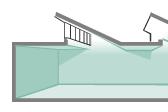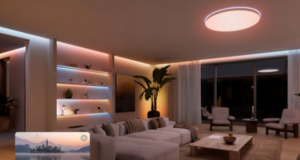
This traditional daylighting method is mostly used in industrial buildings, but is now making a comeback in homes.

There are many reasons for the renewed interest in daylighting, particularly the ever-increasing cost of electricity and the fact that lighting technologies have a limited lifetime. A sawtooth roof is one method that can have a profound effect on how you light your home. The name, obviously, refers to the fact that these roofs look like the teeth on a saw, although a sawtooth roof on a house may only feature a single ‘tooth’.
The origins of sawtooth roofs
Sawtooth roofs were popular in factories in the 19th century, but there was a decline in their use when artificial lighting became more readily available and affordable. They are now re-emerging as the use of natural light falls back into favour.
How sawtooth roofs work
These roofs are formed by vertical glass windows and a sloping roofs, each window representing one tooth of the saw. The use of light-coloured baffles helps to distribute the light evenly while an overhang protects against direct sun penetration. If, however, your sawtooth roof is facing east or west, you will need to ensure that you have a way of controlling the amount of light they let in, as during sunrise or sunset (depending on the direction the roof is facing) you will get direct sun exposure and the heat and glare problems associated with it.
Ideally these sawtooth windows should be located on the south side of your house to avoid direct sunlight. Also, windows in sawtooth roofs should ideally be double-glazed to avoid heat gain in the summer months and heat loss during winter.





